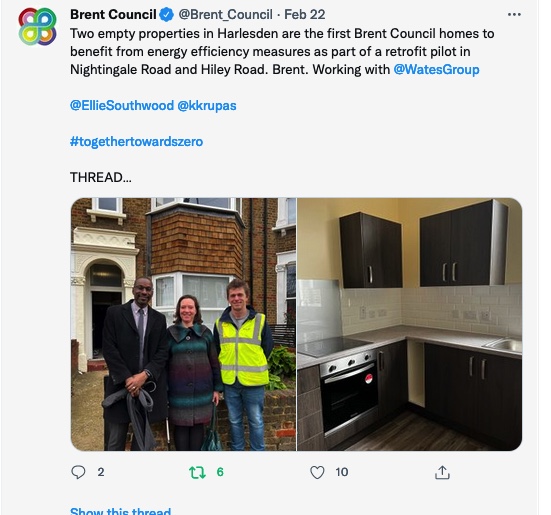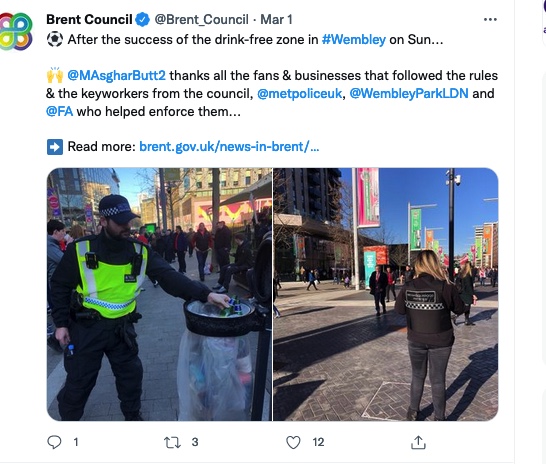District Heating Networks (DHN) promised a more environmentally sustainable heating system through a single heating plant for multiple properties rather than expensive individual gas boilers.
Research published as long ago as 2002 LINK concluded:
The result is that, although the DHN is affected by much higher embodied energy (mostly for piping and civil works) than that required by domestic gas boilers, the energy consumption and the polluting emission rate is so low as to balance the difference with the competing technology in a few years.
By 2015 Which LINK was discussing some drawbacks:
Many of us don’t trust energy suppliers, but what if you were stuck with one supplier for as long as you lived in a property, with no control over the price you pay? This is the reality for many district heating customers.
More than 200,000 homes across the UK are connected to a district heating network. This is where heat from a central source is distributed to properties through a network of pipes. And its use is growing, particularly in built-up urban areas. The Government thinks district heating could provide heat to eight million homes by 2030.
There are benefits; it can be low carbon and there’s no need to maintain a gas boiler. However, there is currently very little protection for consumers living in properties connected to district heat networks.
They have no choice in who they get their heat from. No access to an ombudsman should they have a complaint. And no control over the price they pay.
We’ve uncovered unacceptable detriment
Over the past year we have been conducting a major investigation of district heating. We spoke to customers on district heating networks, including those of you who shared your views here on Which? Convo. We found widespread dissatisfaction, with cost a major concern.
The people we surveyed had concerns ranging from worry that they had been mis-sold district heating, to confusion around what was included in their bills. Many of them felt let down and frustrated by poor customer service and complaints handling procedures.
It’s an emotive issue, as one private homeowner from London told us:
‘We are stuck between the supplier and the developers, with each blaming the other for the lack of hot water. All the while we … face numerous outages and so have to boil a kettle to wash or bath my two and a half year old in.’
We also looked at the cost of district heating and found a huge difference in the price paid by customers. Some were paying up to 25% more for their heating than if they’d been on a standard gas deal, and that includes all the additional costs of installing and maintaining a gas boiler. In many cases, district heating customers couldn’t understand why they were being charged a high standing charge, despite not having the heating on and using little or no hot water.
District heating – what’s the solution?
We have been working with the industry on Heat Trust, a voluntary consumer protection scheme. Heat Trust aims to replicate many of the protections available to those with gas or electric heating, such as access to an ombudsman and guaranteed standards of performance. However, as a voluntary scheme, it won’t cover all consumers and it won’t tackle the issue of fair pricing.
Access to affordable and reliable warmth and hot water is a fundamental right; we rely on it for comfort and health. Everyone deserves a fair deal and great customer service from their heat supplier. However, there’s a danger that district heating companies will take advantage of their unregulated, monopoly position.
By January 2022 Leaseholder Knowledge pulled no punches :
Leaseholders who get their heating and hot water from communal systems face price hikes of nearly 500%, and are unable to switch suppliers for a better deal.
They feel like “captives” who are being “extorted” by their “monopoly” providers, they tell the Leasehold Knowledge Partnership
A major issue is that properties in DHNs are counted as commercial rather than domestic entities and are therefore not entitled to the energy cap. In January of this year Energy Live News reported:
The government has been urged today to take urgent action to protect around half a million homes living on communal and district heating networks.
The Heat Trust suggests these homes could be hit hardest by the soaring gas prices because heat networks operators purchase gas on the commercial rather than domestic markets.
Commercial gas prices are currently around four times pre-crisis levels. The Heat Trust said commercial gas saw a 1000% price increase last year, rising from 1.5p per unit to 15p per unit before Christmas.
The report notes that consumers and landlords operating heat networks are already reporting examples of price rises of up to 700%.
The authors of the report called for the government to intervene by allowing heat network operators to purchase gas at the capped domestic tariff rates.
No action has been taken by the Government and the war in Ukraine is pushing up world energy prices leaving tenants in DHNs (large scale) or Neighbourhood Heating Networks (covering a small number of buildings) facing unsustainable bills way beyond those outlined above from April.
However the starting point for residents in a local network before those increases is still higher than domestic consumers:
These figures are for a one bedroomed property in South Kilburn:
Flat energy use - about £600 a year (to date, not reflective of upcoming increases)
Boiler/pump electricity - historically up to £750 a year (to date, not reflective of upcoming increases)
Heating system maintenance - about £300 a year
Sinking fund contribution for boiler replacement - £50 a year
Heating System Total: £1,700
On top of this there is the bill for domestic electricity use.
The resident can switch suppliers for domestic electricity but not for the Heating Network. The same applies to the insurance premium which is very high.
The freeholders of building or whoever owns the heating system (sometimes not the freeholder but another investor or energy company) get commission from the whoever they buy energy from and the electricity supplier. This means they do not have an incentive to seek a lower price.
SOUTH KILBURN NEIGHBOURHOOD HEATING NETWORK
Brent Council on environmental and cost saving grounds is installing a District Heating Network on new developments on the South Kilburn Estate. Attempts by Wembley Matters to ask Brent Council to comment on the repercussions of the current fuel crisis have not been answered. Questions are batted between the Council, housing associations and providers, This is a note from the Minutes of the South Kilburn Tenants Steering Group of 24th November 2021:
South Kilburn Neighbourhood Heating
Francesca Campagnoli (LB Brent) Francesca introduced herself and provided an update on the proposed South Kilburn District Heat Network. The network is intended to provide heating and hot water for all new homes in South Kilburn in phases between 2024 and 2030. All homes would have individual meters and thermostats with heating and hot water available all year but only billed to individual homes based on usage. The heating will also be underfloor in all new homes with no requirement for radiators.
There has been no detailed reply from Fransesca but housing officers have been unable to supply estimates of future heating bills to would be tenants of DHN properties currently being allocated such as Chippenham Gardens, now known as Alphabet. These are council tenants being moved from buildings due to be redeveloped and clearly would not be able to afford the uncapped energy bills that look likely. I have already heard of someone turning down a property here because of this factor. Tenants will come under the Octavia housing association with energy billed by GURU.
Brent Council set out its proposals for billing in July 2020. LINK
Fuel Poverty Action are very concerned about the issue and published this
valuable research last year on tenant action over high prices and unreliability of a DHN:
District Heating Networks are the preferred option for heating in developments across Brent and it is hard to predict whether in the future this will be the best option. Clearly there needs to be legislation to protect residents.
Meanwhile I would like to hear from tenants and owners of DHN buildings about their experience. Please comment below.

















